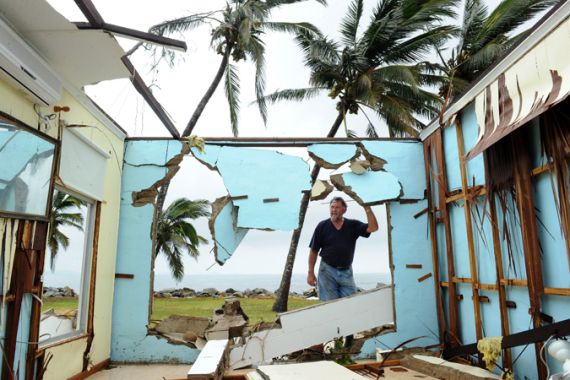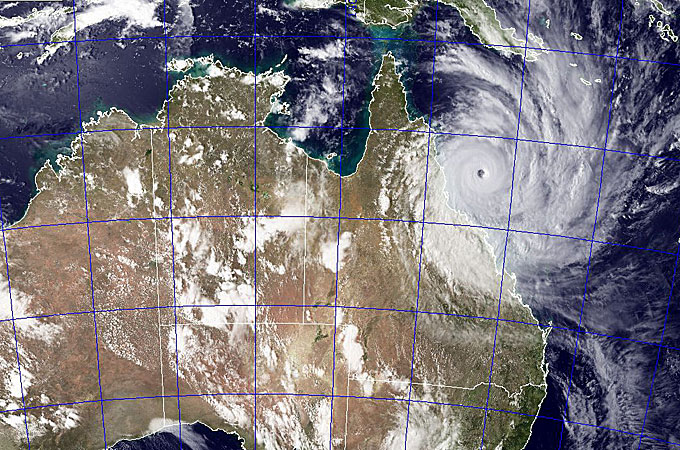New cyclone threatens Australia
Carlos dumps record amount of rain, eclipsing Yasi that flooded Queensland two weeks ago.

 |
| Cyclone Yasi caused huge damage to the north-east coast of Australia at the beginning of February [EPA] |
Just two weeks after Tropical Cyclone Yasi caused massive destruction to parts of Australia, another big storm has brought further flooding to the far north of the country.
Tropical Cyclone Carlos dumped a total of 339.6mm of rain over Darwin during the 24 hour period ending midnight GMT on Wednesday. This is an all-time record for the city over a 24 hour period and eclipses anything that Yasi produced over any town in a single day.
Keep reading
list of 4 items‘Mama we’re dying’: Only able to hear her kids in Gaza in their final days
Europe pledges to boost aid to Sudan on unwelcome war anniversary
Birth, death, escape: Three women’s struggle through Sudan’s war
In fact, Darwin has now had a staggering 470mm of rain over a 48-hour period and there is more to come. The storm is moving very slowly and that is why we are seeing such huge rainfall totals over a similar area. In the case of Yasi the wind was as much a damaging feature as the rain. Typical rainfall totals were nearer 160mm of rain over a 24 hour period.
The other concern is the strength of the winds. Cyclone Carlos has uprooted trees and downed power lines. The storm has been classified as a category one storm and may well intensify into a category two over the next 24 to 36 hours and there-in lies the source of some confusion.
Different parts of the world have different scales for categorising tropical storms (in the same way that they are known as different things depending on which oceans they are affecting). In Australia the scale is based on the strength of the maximum wind gusts, but most people relate to the Saffir-Simpson hurricane scale. This is the one that is used for storms that form in the Atlantic Basin and Caribbean. This scale measures the maximum sustained winds.
Without wishing to play down the intensity of Tropical Cyclone Carlos, if it were to be categorised on the Saffir-Simpson Scale, it would currently be classed no higher than a tropical storm.
The main problem here is the amount of rain, and this is a huge rain maker. There will be further flooding for Northern Territory and later northern parts of Western Australia over the next few days.